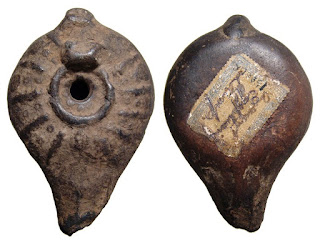Recent archaeological discoveries in the Holy Land
In some parts of the world, archaeological discoveries are few and far between. Such is not the case for the Holy Land and its neighboring regions. Recent findings in Israel were more than mundane discoveries; rather, they are ones that help paint the huge picture of eras in the City of David.
Sadigh Gallery reports that two micro 2,600-year-old paleo-Hebrew inscriptions were found during an excavation in Givati Parking Lot in the City of David. Both inscriptions were found just a few weeks apart. A clay seal impression read “(belonging) to Nathan Melech, Servant of the King,” with Nathan-Melech being one of the officials in King Josiah’s court. Nathan Melech was mentioned in the Bible in 2 Kings. The other one, a bluish agate stone seal, maintains an inscription that says, “(belonging) to Ikkar son of Matanyahu.”
A stone altar etched with alluring clues about an uprising from 2,800 years ago was recently discovered in Ataroth, Jerusalem. The rebellion, which was mentioned in the Hebrew Bible, spoke of a revolt by the kingdom of Moab in opposition to the kingdom of Israel. In addition to the stone altar, a Byzantine-era church was unearthed in northern Israel which is believed to be standing on the site of Bethsaida where Jesus fed the 5,000.
The Byzantine-era church may be the church that was built on top of the home of Peter and Andrew, two of Jesus’ original 12. However, the claim was challenged by other archaeologists who debated that they have begun excavation of Bethsaida at a place named et-Tell.
Sadigh Gallery provides affordable ancient art works and coins for collectors of every level. With convivial service, it has been good friends with many of their decades-long customers. To read more from Sadigh Gallery, subscribe to this blog.
 |
Image source:
breakingisraelnews.com
|
 |
Image source: thesun.co.uk
|
Sadigh Gallery reports that two micro 2,600-year-old paleo-Hebrew inscriptions were found during an excavation in Givati Parking Lot in the City of David. Both inscriptions were found just a few weeks apart. A clay seal impression read “(belonging) to Nathan Melech, Servant of the King,” with Nathan-Melech being one of the officials in King Josiah’s court. Nathan Melech was mentioned in the Bible in 2 Kings. The other one, a bluish agate stone seal, maintains an inscription that says, “(belonging) to Ikkar son of Matanyahu.”
A stone altar etched with alluring clues about an uprising from 2,800 years ago was recently discovered in Ataroth, Jerusalem. The rebellion, which was mentioned in the Hebrew Bible, spoke of a revolt by the kingdom of Moab in opposition to the kingdom of Israel. In addition to the stone altar, a Byzantine-era church was unearthed in northern Israel which is believed to be standing on the site of Bethsaida where Jesus fed the 5,000.
The Byzantine-era church may be the church that was built on top of the home of Peter and Andrew, two of Jesus’ original 12. However, the claim was challenged by other archaeologists who debated that they have begun excavation of Bethsaida at a place named et-Tell.
Sadigh Gallery provides affordable ancient art works and coins for collectors of every level. With convivial service, it has been good friends with many of their decades-long customers. To read more from Sadigh Gallery, subscribe to this blog.



Comments
Post a Comment